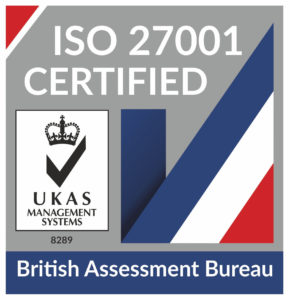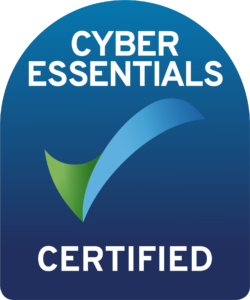
HaloITSM Guides
Documentation to assist with the setup and configuration of the HaloITSM platform
Halo Migration - On-premise to Hosted

On-Premise to Hosted Migration
The Process
The process of moving a Halo Web Application between two production environments should require very little real-world downtime. We have worked extensively on a streamlined and risk-free migration process with instant backout should any unforeseen consequences arise.
A short outline is below:
You will first take an initial unencrypted full backup of the database from its current environment and transfer this to us over SFTP. All automatic backups from this point are stopped to ensure that the backup chain is current and no further large files are required.
The applications are prepared at this time, the application servers are scaled appropriately to cope with the increased load after the migration has taken place.
A final partial backup is taken and transferred, this is then restored into Halo's production hosted environment. On-premise services are turned off and all required tests are carried out in Halo's production hosted environment.
Migration Plan
1. Information
Halo will need the following information to proceed with the migration:
- Database size
- Hosted region (United Kingdom, US, Canada, South Africa, Germany, Australia, Bahrain)
- Hosted Halo Agent application URL
- This is the URL we will migrate the complete Web Application onto
- Hosted Halo End User Portal URL (if required)
- This will be the URL on which your Users will access the portal
- Main contact for admin access
- Main contact email for admin access
- Current on-premise SQL version
- This must be SQL Server 2019 or lower to ensure compatibility
- Whitelisting
- Whitelisting for on-premise mailboxes, SMTP relay, conditional access Cloud Mail etc.(O365, Google Workspace)
- Upgrade path
- Stable (recommended)
- Beta
- Integration requirements
- Existing on-premise Halo integrator setup
- Ongoing cloud service syncs (Azure AD, Intune)
- These will be performed by Halo
- On-premise AD connections, PowerShell etc.
- This must remain on-premise
- Ongoing cloud service syncs (Azure AD, Intune)
- Is Backup Encryption in use?
- This will need to be turned off and all encryption keys removed
- Ensure rencthumbprint in control is empty. If this is not the case please discuss it with a member of the infrastructure team
This should be queried in the Halo reporting suite or accessing the SQL Server Instance using the below query
select iif(isnull(rencthumbprint,'')='','TRUE','FALSE') rencthumbprint_is_empty from dbo.control
2. Timeline and Preparation
Once Halo has the above information, the customer will be provided with the requirements needed to complete the migration. The migration timeline will be provided, and a completion date will be established.
If the customer will use a non-Halo domain for any URL hosted by Halo, then DNS changes will be scoped out at this point. If the customer is using a non-Halo domain then an SSL certificate will be requested by Halo.
If an SSL certificate is required from the customer, then this will be requested at this point using AWS validation - Requires adding a record for each domain required, one for the web application and one each for the self-service portal(s). This can be a single wildcard if they sit under a shared domain.
An ssh public key should be generated and handed over to the members of the Halo team planning the migration. This will be used to generate SFTP credentials using the ssh key as the password to transfer the Full Database Backup and any Differential/Log Backups as well as any additional files to be transferred to or from the Halo Infrastructure Team.
It should be in the format below:
ssh-rsa AAAAB3NzaC1yc2EAAAADAQABAAABAQCba21UHE+VbDTpmYYFZUOV+OQ8AngOCdjROsPC0KiEfMvEaEM3NQl58u6QL7G7QsErKViiNPm9OTFo6HF5JijfWzK7haHFuRMEsgI4VwIYyhvqlJDfw/wt0AiVvSmoMfEQn1p1aiaO4V/RJSE3Vw/uz2bxiT22uSkSqOyShyfYE6dMHnuoBkzr4jvSifT+INmbv6Nyo4+AAMCZtYeHLrsFeSTjLL9jMPjI4ZkVdlw2n3Xn9NbltF3/8Ao8dQfElqw+LIQWqU0oFHYNIP4ttfl5ObMKHaKSvBMyNruZR0El/ZsrcHLkAHRCLj07KRQJ81l5CUTPtQ02P1Eamz/nT4I3
3. UAT (Recommended)
A copy of the live database from the on-premise instance can be copied into Halo’s hosted instance and deployed as a UAT environment for testing. This is recommended so that the customer can observe the process and allows for smooth migration of production instances.
4. Production Migration
A full encrypted backup of the production database is taken and uploaded to an SFTP site (this can be provided by Halo), and all backups are stopped on the on-premise server. Once the database is restored in Halo’s environment, a transactional backup can then be taken and uploaded to the same place. At this point, the current on-premise application will be turned off and email processing stopped. The customer can continue working on the on-premise application between the two backups, and the service is only disrupted after the final backup takes place.
The process of the final backup, taking the database offline, uploading to the FTP site and restoration usually yields downtime of around 15 minutes to the main application. The reporting module in the Agent application could take longer with larger databases due to propagation through the database cluster.
Halo will deploy the instance into the hosted environment and run through tests on all services once the application is reachable to the customer. The services to be tested are:
- Halo Agent Application
- Halo End User Portal
- Email Processing (inbound and outbound)
- Halo Integrator (if applicable)
- Images work
- The Migration is complete once these tests are completed.
5. Backout Plan
If a backout is required for any reason and the migration is not able to be completed at the specified time, the on-premise services should be reactivated where required. No data loss should be incurred.
Aftercare
The following workday
Once the migration is completed your dedicated point of contact within the product team will handle any small issues that may arise. As an example, this could be unforeseen issues with ticket forms if migration from the NetHelpDesk Windows app has taken place due to elongated compatibility.
Ongoing Support
After migration support for the application will return to Halo Product Support and Technical support where required. Please contact us via email or phone when required.
Feedback
Any feedback on the process, documentation or requirements is always welcome, please file this through your CSM or point of contact.
The Halo Infrastructure Team
Document revised:
Popular Guides
- Asset Import - CSV/XLS/Spreadsheet Method
- Call Management
- Creating a New Application for API Connections
- Creating Agents and Editing Agent Details
- Departments and Teams
- Halo Integrator
- Importing Data
- Multiple New Portals with different branding for one customer [Hosted]
- NHServer Deprecation User Guide
- Organisation Basics
- Organising Teams of Agents
- Step-by-Step Configuration Walk Through



